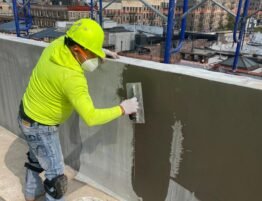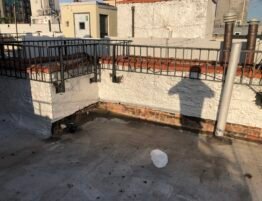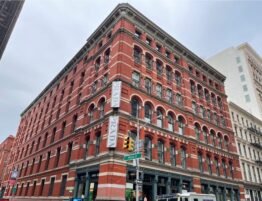
 Window lintels have an enormous role in retaining the structural integrity of your building. Can you imagine these lintels bearing the entire overhead load above window openings? The windows in your apartment or commercial building are not structurally designed to support the load by themselves. Hence, horizontal beams or lintels are found in masonry structures to hold up to the load.
Window lintels have an enormous role in retaining the structural integrity of your building. Can you imagine these lintels bearing the entire overhead load above window openings? The windows in your apartment or commercial building are not structurally designed to support the load by themselves. Hence, horizontal beams or lintels are found in masonry structures to hold up to the load.
Acknowledging the significance of the critical functionality of these structures necessitates window lintel waterproofing NYC. Moisture is the most common cause of masonry deterioration, and window lintels are no exception! Particularly, residing in cities like the Bronx, Queens, Manhattan, Long Island, Brooklyn, and Richmond Hill, the lintels are more susceptible to damage. Do you want to know why?
In this blog, we have discussed all the factors leading to lintel damage and how you can protect it through waterproofing. So, let’s get straight to the discussion.
How Water Damage Window Lintels?
To masonry structures, water has always been the prevalent cause of damage or deterioration. It is the fundamental reason behind most masonry failures, including window lintels. Now, how does your lintel get affected by moisture exposure?
- Dampness- When the exterior of your building receives excessive water due to precipitation in the form of rain or snow, most of it gets soaked by the porous masonry surface. In other words, water infiltrates through the surface, reaching the inner layers. Often, this moisture gets trapped within the structure, leading to dampness over time. As the dampness advances, it weakens the structural bond. Only a professional lintel waterproofing contractor can fix it.
- Corrosion and Rotting- Lintels are made of brick, concrete, metal, or timber. As moisture interacts with these materials, it results in corrosion or rotting. For brick, concrete, and metal lintels, rusting or corrosion is prevalent, gradually disintegrating the metal components. Rotting happens as wooden or timber lintels are exposed to prolonged moisture. In either case, lintels become weak and unstable, leading to structural failure.
- Mold and Mildew- With a moist surface, the growth of mold and mildew is evident. These organic growths are extensively detrimental. They cause surface decay and gradually affect the inner layers by crumbling the structure. So, all you have is delicate and rickety lintels! You will need immediate window lintel services to address the problem.
How Window Lintel Waterproofing Protects Your Building?
The damages caused by moisture seepage can become severe if you do not address them promptly. Waterproofing is the ideal solution to protect your window lintels, and it will also promote the longevity of the building. Let’s learn how.
- Preserve Strength and Integrity- The primary reason to waterproof the lintels is to safeguard their structural strength and stability. Since window lintels are responsible for bearing overhead load and retaining the shape and position of windows, you must keep them structurally sound. By waterproofing, you can seal cracks and gaps that allow water infiltration into the inner layers. The waterproofing coat acts as a barrier against water seepage. Therefore, you can protect the structure from severe defilement.
- Prevent Water Intrusion- Often, gaps and improper flashing can lead to water intrusion into the building’s interiors. It damages the floor, furnishings, and furniture. The situation gets worse with heavy rainfall! Nonetheless, window lintel waterproofing services can save you from this annoying circumstance.
- Restrict Mold and Mildew- Evidently, waterproofing curtails dampness, which is responsible for molds and mildew. A waterproofed window lintel will keep molds and mildew in check.
- Promote Building Longevity- Lastly, with stronger window lintels, you have a more durable building. Your building will be protected against subsequent water damage, aiding a safer living environment.
We hope you will no longer postpone or ignore window lintel waterproofing!












